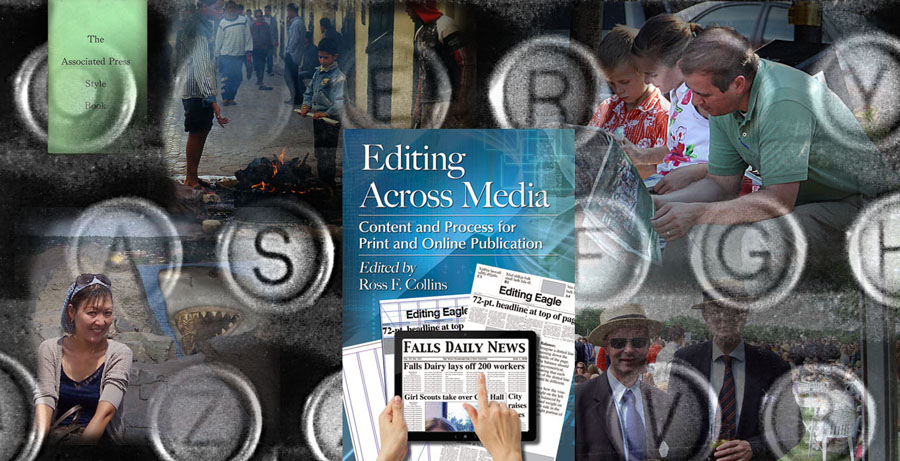

Editors in the new millennium have faced enormous technological change. Duties and routines that lasted a century or more have fallen faster than tight deadlines at big dailies—that is, if those dailies still existed. Some are gone. The rest are surely online, either incidentally or totally. Editors who could do an excellent job of working a written story into a polished showpiece found that this considerable skill was no longer enough.
Today many editors have to do more, know more, be more. They have to master technologies that reach beyond copy editing. They may write headlines for search engine optimization and construct blogs for reader discussion. They may tweet the news and tweak the pictures for presentation in print or on screen. They may design pages and opine in social media. They may even write stories based on material transmitted from reporters, and certainly they will brainstorm the multimedia packages readers expect in a converged media world.
Editing, like all journalism, has become a process. But editors today don’t all work in news operations. Editing is critical to all communication, including public relations and advertising. Many writers in these areas also are editors, the roles blurred, but the expectations still high. Writers should know how to edit. Editors must know how to write. And they’ll probably do both.
The challenge is to produce in one textbook a series of essays that touches on all jobs listed under the title “editor” in the twenty-first century. We decided it’s impossible to do alone. If editing students today are more and more expected to learn it all, textbooks need to draw from many areas of expertise to help them learn it.
This text attempts to address the needs of editors both in and out of the newsroom. The writers of these essays acknowledge the continuing power of newsprint, but also consider the growing influence of convergence. They assess the ever-greater significance of visual literacy and the need of editors in public relations to present polished work to their clients.
What is an editor? Maybe we should ask what an editor is not. The traditional copy editor is becoming a content editor. These essays help us to understand those new demands. An editor today may be the classic multitasker. But some tasks haven’t changed. An editor is not a professional who takes no pride in careful grammar and considered word usage. She is hardly ignorant of the wide world around her, having soaked up knowledge like a wiki through widespread reading and wide-ranging education. He is not oblivious to the ethics of plagiarism and the law of libel that could damage his operation and destroy his career.
Introduction
Ross F. Collins
One. Editing Across Media.
Margot Opdycke Lamme
Two. Editing Begins with the Writer.
Mavis Richardson
Three. Think Like an Editor.
Deneen Gilmour
Four. Editors, Ethics and the Law.
Paulette D. Kilmer
Five. Headlines and Headings.
Chris Roberts
Six. Typography Then and Now.
Jim R. Martin
Seven. The Visual Editor.
William E. Huntzicker and Ross F. Collins
Eight. Page Makeup: Beginning the Design Process.
Amy Mattson Lauters
Nine. Page Design on Paper and Screen.
Therese L. Lueck and Val Pipps
Ten. Editing in a Converged World.
Ross F. Collins and Cameron Haaland
Eleven. A Final Project: Editing a Magazine.
Victoria Goff